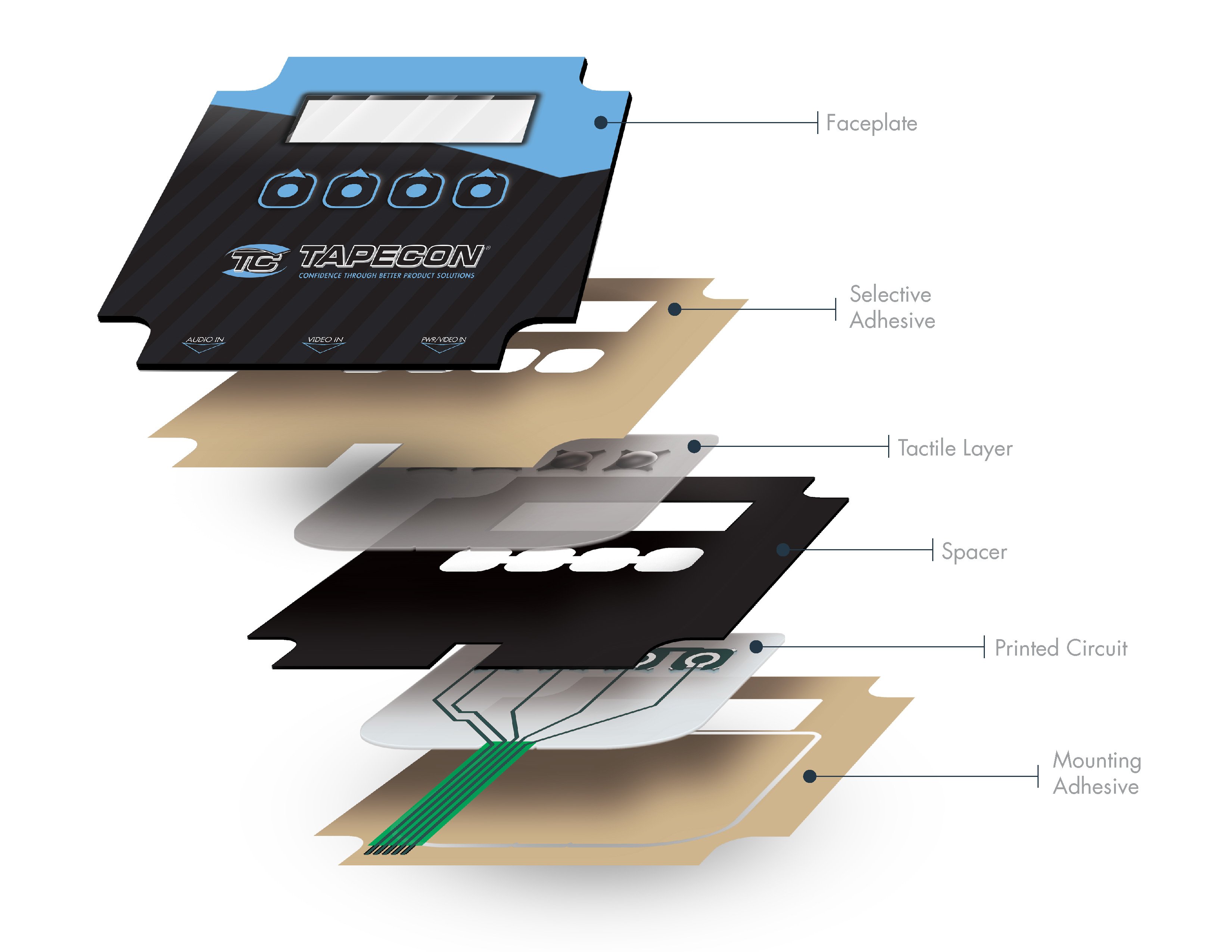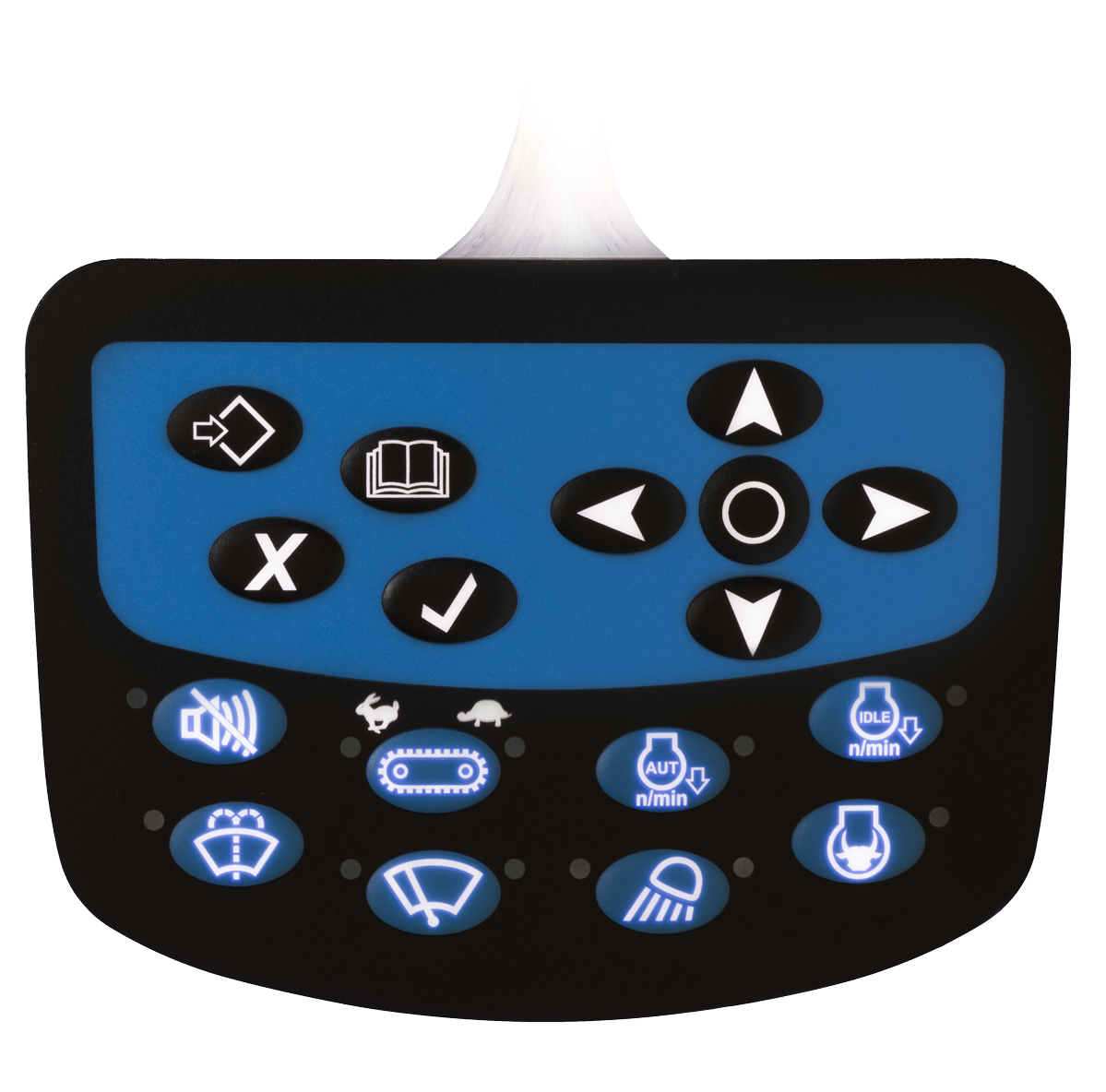Choosing the Right Membrane Switches for Your Product’s Needs
Choosing the Right Membrane Switches for Your Product’s Needs
Blog Article
Comprehending the Importance of Membrane Switches in Interface
Membrane switches are important parts in the layout of effective user interfaces, helping with not just capability yet additionally enhancing aesthetic appeal and user interaction. As we check out the future fads and numerous benefits associated with Membrane technology, it becomes clear that these switches are much more than just components; they represent a convergence of development and practicality.
What Are Membrane Switches?

The spacer layer, which contains sticky homes, permits the separation of the circuit layer from the overlay, guaranteeing that the switch remains in a non-activated state up until pressed. When stress is related to the overlay, it presses the spacer layer, connecting the gap and finishing the circuit in the underlying layer. This layout not just minimizes the physical space required for conventional mechanical switches but likewise improves the longevity of the device, as Membrane buttons are normally resistant to dirt, moisture, and various other environmental aspects.
Generally discovered in applications ranging from consumer electronic devices to clinical devices, Membrane buttons are essential to modern-day technology, supplying a straightforward and efficient user interface that lines up with contemporary layout demands.
Advantages of Membrane Switches
While many button modern technologies exist, Membrane Switches deal distinct benefits that make them especially desirable in various applications. One of the key benefits of Membrane buttons is their compact layout, which permits space-saving implementations in devices where realty is limited. Their slim profile not only boosts aesthetic appeal yet also facilitates lightweight building.
An additional significant benefit is their resistance to ecological elements. Membrane buttons are typically sealed versus moisture, dust, and contaminants, making them suitable for use in demanding settings, such as clinical tools and industrial equipment. This toughness prolongs the life expectancy of the button, minimizing maintenance prices and improving integrity.
Furthermore, Membrane switches can be customized to satisfy certain layout requirements, incorporating distinct graphics and colors that enhance customer interaction. Their responsive responses options can additionally be tailored to provide an enjoyable individual experience. In addition, Membrane buttons are economical, especially in high-volume applications, as they can be produced effectively.
Applications in Various Industries

In the customer electronics sector, Membrane switches are widespread in tools such as microwaves, cleaning makers, and push-button controls. Their responsive responses and visual alternatives improve customer experience while giving a sleek, modern-day look. Furthermore, auto manufacturers make use of Membrane buttons in dashboard controls and infomercial systems, where area is restricted, and customer interaction is critical.
Additionally, the industrial market leverages Membrane switches in control panels for machinery and tools, permitting instinctive procedure in usually extreme environments. Their resistance to chemicals and moisture makes certain durability and reliability in these applications. On the whole, the flexibility of Membrane Switches go to this site contributes substantially to their widespread use, making them crucial in different technological domain names.
Design Considerations for Membrane Switches

When developing Membrane buttons, numerous vital factors to consider must be taken into consideration to make certain optimum performance and individual experience. First of all, the selection of products is crucial; choosing long lasting, high-grade substratums can boost the button's longevity and resistance to environmental variables such as dampness and temperature level fluctuations.
Secondly, the layout of the graphic overlay need to focus on clarity and simplicity of use. Symbols and text have to be clear, and the design should help with intuitive interaction (membrane switches). Additionally, responsive responses is important; integrating a tactile dome or various other devices can improve the customer experience by providing physical confirmation of activation
One more vital element is the button's electric efficiency. Developers must ensure that the conductive traces are effectively designed to lessen resistance and stay clear of signal interference. This involves assessing the required actuation pressure and ensuring compatibility with the digital elements they will certainly interface with.

Future Patterns in Membrane Technology
As technology remains to breakthrough, Membrane switches are poised to advance dramatically, driven by innovations in materials and manufacturing strategies. One emerging trend is the unification of innovative products, such as conductive inks and flexible substratums, which enhance durability and decrease the overall weight of Membrane buttons. These products not just boost the tactile reaction yet likewise enable the design of switches that can withstand harsher ecological problems.
Additionally, the integration of touch-sensitive innovations is transforming typical Membrane Switches into even more interactive interface. Capacitive touch sensors embedded within Membrane button panels can provide an extra responsive and user-friendly individual experience, lining up with the expanding demand for smooth, contemporary designs in consumer electronic devices.
Additionally, developments in printing strategies, such as digital and 3D printing, enable fast prototyping and modification of Membrane buttons. This flexibility allows producers to react faster to market needs and customer choices.
Lastly, sustainability is ending up image source being a considerable emphasis, with manufacturers discovering eco-friendly materials and procedures. As these patterns unravel, the future of Membrane technology promises boosted performance, aesthetic appeal, and environmental obligation, strengthening their duty in advanced interface throughout numerous markets.
Verdict
In conclusion, Membrane Switches stand for a crucial element in the design of user interfaces, incorporating performance with aesthetic adaptability. Their benefits, including sturdiness and resistance to environmental variables, make them appropriate for diverse applications throughout different industries. Thoughtful style considerations improve user communication and experience. As developments in technology proceed, the evolution of Membrane switches is anticipated to further fine-tune interface, driving advancement and improving use in a progressively intricate technological landscape.
Membrane switches are indispensable components in the style of reliable customer interfaces, helping with not just capability but also improving visual allure and user interaction.Membrane Switches offer as an essential component in various individual interfaces, assisting in a smooth communication between users and electronic gadgets.While many button modern technologies exist, Membrane Switches deal distinct advantages that make them particularly desirable in different applications.Additionally, Membrane buttons can be personalized to fulfill details layout needs, including distinct graphics and colors that improve individual interaction.In final thought, Membrane Switches represent a vital component in the design of customer interfaces, incorporating capability with visual adaptability.
Report this page